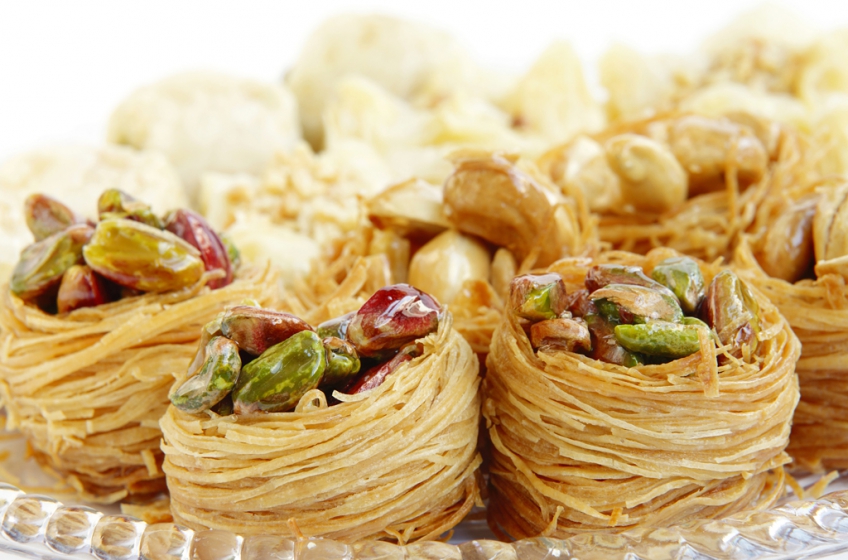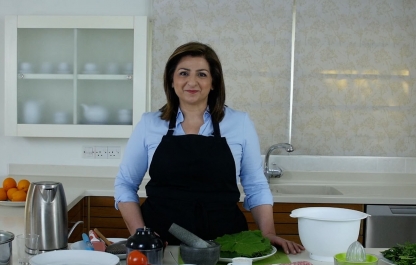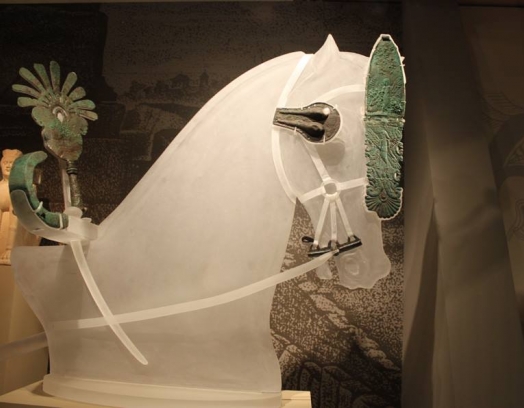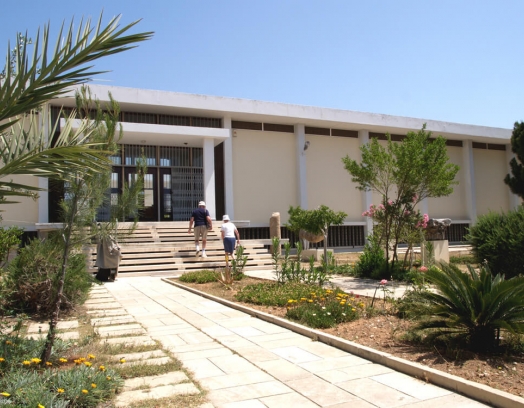Cyprus cuisine is famous well beyond the island, partly due to the unique mixture of Greek and Turkish traditions within the sole Mediterranean cooking culture with its love to olive oil and fresh natural ingredients. Every dinner on the island includes several types of cheese, olives, classical sauces, fresh bread, seafood and meat.
Cyprus cuisine traditions were dramatically affected by both Greece and Turkey. Grilling and such ingredients as parsley, garlic and yoghurts came to the island from these countries. Hot spices are less widespread in Cyprus than in Turkey, but such Italian herbs as mint, cardamom, arugula and estragon are extremely popular here. During the period of British occupation, Cypriots grew to like curry and ginger.
The mild climate and fertile soil allow Cypriots to grow vegetables and fruit. The island is known for its oranges and grapefruit; even bananas are grown not far from Paphos. Troodos mountains create a perfect setting for nut and olive trees cultivating. Most of Cyprus vineyards are also located in the mountains.
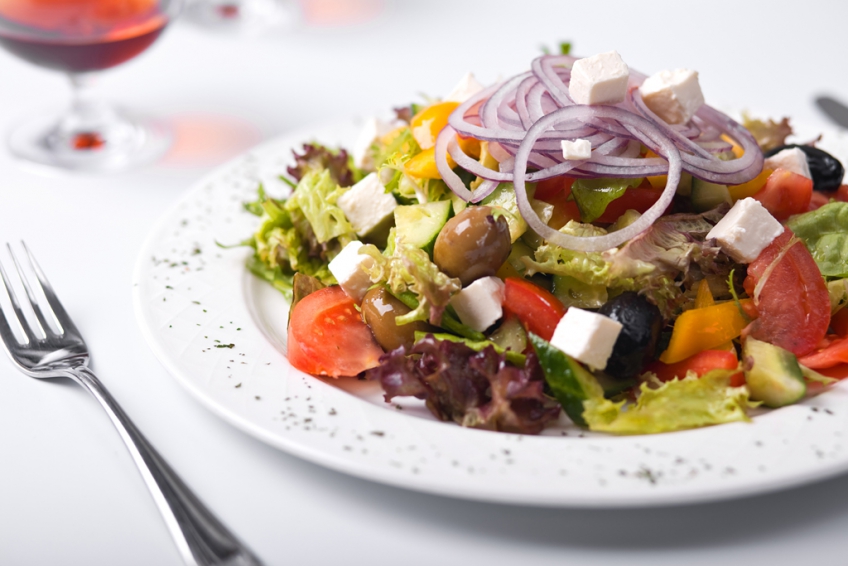
Lamb, pork and rabbit meat are most frequently used for meat dishes. Tuna and sword fish are Cypriots’ favourite fish.
«Meze plates» served almost everywhere on the island are the best way to try couple dozens of different dishes during one dinner.
Our review is dedicated to some of the main traditional Cypriot dishes, their history and ways of preparing.
Main courses
Kleftiko is a famous Cypriot dish which is usually made from a lamb’s legs. The name of the dish can be translated from Greek as «stolen meat». As the legend has it, once shepherds decided to steal and eat a goat from the herd. They hid it in the hole and made a fire above this hole. The meat that had been cooked in the ground turned out to taste so good, that this way of preparing soon became well-known, and the dish got its name — kleftiko.
Of course, modern chefs do not cook kleftiko in the ground. Instead, they use mud stoves (the taste is still perfect). It is also possible to prepare meat in the baking oven. Kleftiko is served with potatoes baked in the same oven and splashed with lemon juice. You can find a cooking recipe at the end of this chapter.
Souvla is another popular meat dish which looks very much like Russian shashlik. The difference is simple: before cooking souvla you do not have to do anything with lamb or pork (just cut meat into big portions, salt and roast on the open fire for an hour and a half), while the meat for shashlik needs to be marinated first.
During the first hour of roasting meat for souvla should be placed high above the coal, and right before serving it is usually moved lower to achieve golden brown colour.
A remarkable fact: all over Cyprus people use automatized roasting devices and never fail to forget to rotate the spitter.
Souvla is usually served with raw vegetable salad, fried pita bread and Halloumi cheese.

Stifado is beef stewed in tomato sauce (sometimes with a little bit of red wine) with onion, garlic and spices. Meat, previously cut into large pieces and roasted with vegetable oil, is stewed along with vegetables in the pot or deep frying pan for 2-2,5 hours. The dish is served with potatoes, rice and vegetables.
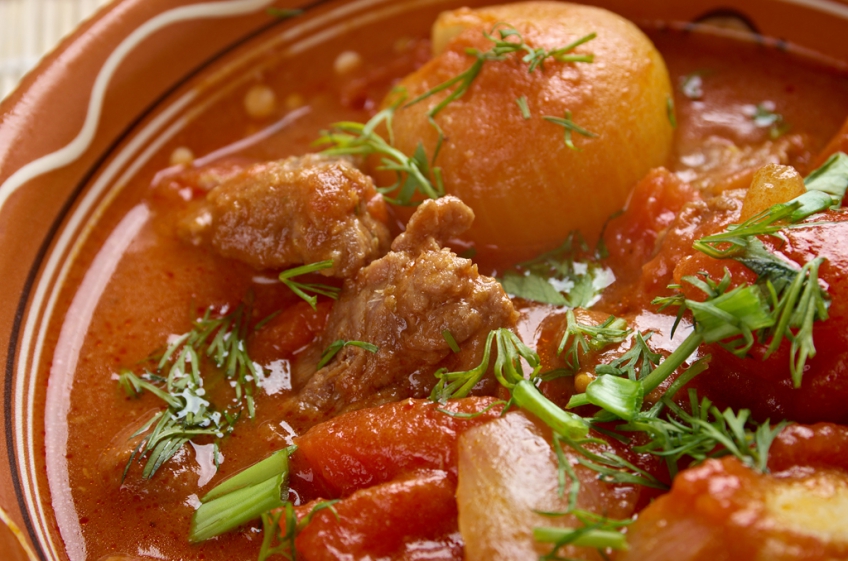
Kotopoulo me Kolokassi is chicken with small pieces of taro, a root tuber from Colocasia family, that Cypriots have been boiling and eating for centuries. It tastes like potatoes. The most popular on the island way of preparing taro is baking with vegetables, meat and some red wine.
To make Kotopoulo me Kolokassi root tubers are usually cut into large pieces and stewed in a pot along with previously fried chicken, onions and celery. Tomato sauce with vegetables and spices is prepared separately.

Moussaka is an eggplant-based dish with lamb, mushrooms or potatoes under the bechamel sauce (a lot of variations are possible). Before cooking, all the ingredients should be prepared: eggplants, potatoes and mushrooms are cut and fried with oil, the sauce is cooked in a pot. Then it is time to layer the dish and put it into the oven for about an hour. Moussaka is popular not only in Cyprus — you can also try it in Turkey, Macedonia and Bulgaria. Vegetarian moussaka is also served in many restaurants on the island.
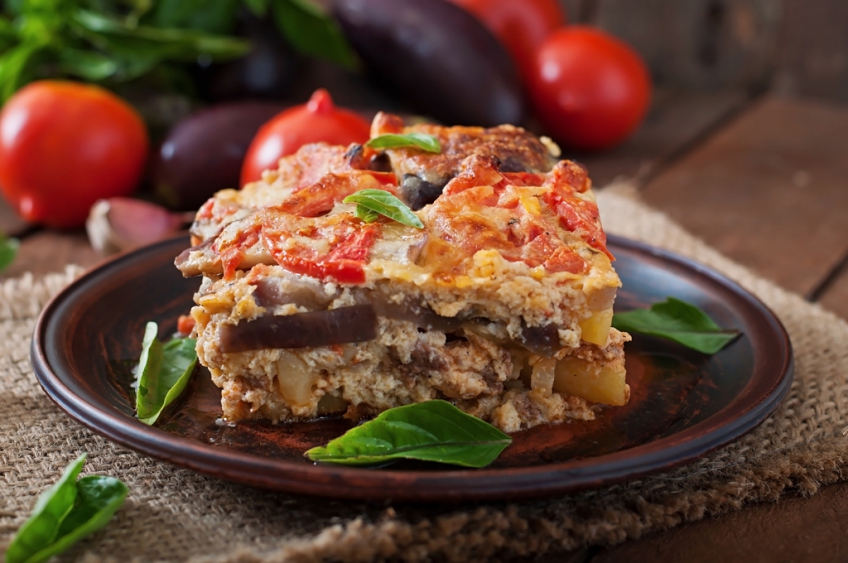
Sheftalies are small patties wrapped in a caul fat. These sausages can be grilled or coal roasted. Some chefs bake sheftalies in the oven or fry them in the pan. The dish is served with potatoes, fresh vegetable salad and the same old lemon which helps to deliver the taste of meat.
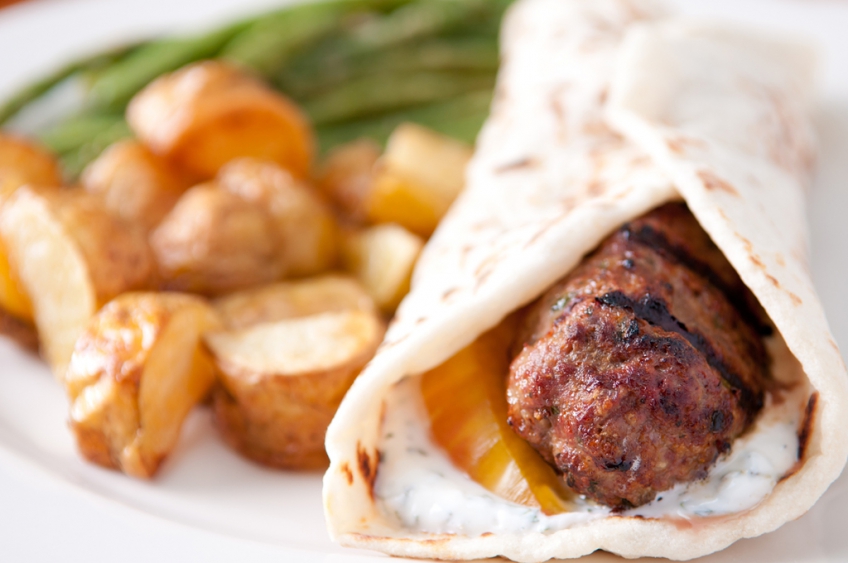
Loukaniko is a long thin pork sausage popular in Greece and South Italy. According to the legend, the dish was invented in Lucania as long ago as the 3rd century BC. When Romans found out the recipe from imprisoned Lucanians, it took a root in Cypriot cookery-books.
Minced meat for loukaniko is usually made from pork mixed with spices, lamb or beef. Hog casings are filled with minced meat, soaked in red wine, and smoked. Then sausages should be left for several days to dry out. Before serving, they are usually grilled or fried on the pan.
Kefalaki is quite a recherche dish: it is a lamb’s head with potatoes stewed in a crock for the whole night.
Seafood dishes
Even though industrial fishing is not widespread in Cyprus, islanders love seafood and know exactly how to cook it.
Restaurants in coastal towns and villages offer dishes made from local tuna, rockfish, sword fish, fangri, mullet, prawns, calamari, oysters, mussels and octopuses.
Cooking methods are classical: roasting with olive oil, grilling and deep fat frying. If possible, fish is baked in one piece.
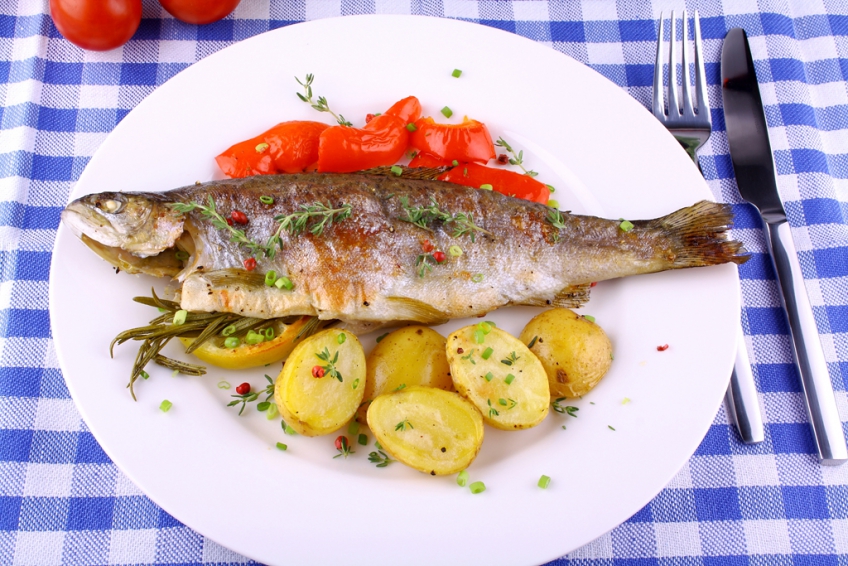
Breams, rockfish and other large fish is usually grilled (сhine and bones need to be removed before cooking), while pan fish, such as mullet and crucian carps, is usually fried with oil.
Grilling is also the most appropriate way of preparing octopuses and calamari.
Fish dishes are traditionally served with half lemon for squeezing.
Recipes
Kleftiko

Ingredients
Lamb: 800 gram
White dry wine: 1 glass
Honey: 1 spoon
Potatoes: 3-4
Carrots: 3-4
Onions: 3
Garlic, rosemary, thyme, oregano, mint: to taste
Cooking method
Cooking method №1:
To prepare lamb meat, wash it and cut into portions. To make the marinade, take one glass of dry white wine, add honey, herbs, spices and greens. Whip the liquid and apply it to the meat.
Before baking marinated meat should be wrapped in parchment paper (along with vegetables, if wished). Roast it in the oven at 200-250ºC for about 20 minutes, then simmer for an hour and a half at 150ºC.
Cooking method №2:
Prepare the marinade (juice from 4 lemons, salt and spices — crushed bay leaf, pepper, oregano and cumin) and pieces of yeast flatbread. Marinate lamb meat and leave for 4-6 hours.
Then fry meat with olive oil, put the portions into pipkins and cover each with cut onions and pieces of flatbread. Bake for 15-40 minutes.
Appetizers
Traditional Cypriot meze plates are a great way to try a dozen dishes during a single dinner. Most restaurants offer salad, meat, seafood, vegetarian and mixed meze, which are served in small plates with «one bite» of each dish. It does not mean you will stay hungry after 15 or 20 meze dishes.

One meze selection can show all the diversity of Cypriot cuisine and include tahini and other sauces, dolmades, stifado, caperberries, mushrooms, keftedes, kleftiko, souvlaki, grilled octopus and much more.
Lunca is smoked pork which often appears on cold meze plates. Sun-dried pork-loin is marinated in wine, and then smoked. Lunca can have different consistence, is often served in a frying pan and used in pork sandwich preparing.
Halloumi is famous Cypriot cheese made from a mixture of goat's and sheep's milk, sometimes with a bit of cow's milk and mint. The structure of this white salty cheese reminds mozzarella. Halloumi has a very high melting point, which makes it possible to fry and grill this product. This cheese is widely used in Cypriot cuisine as an independent dish and in salads. It is also served with vegetables, mussels and other seafood, small sausages or lunca. When it is hot, halloumi goes great with watermelon and when it comes to the tea time you can try it with honey and nuts.
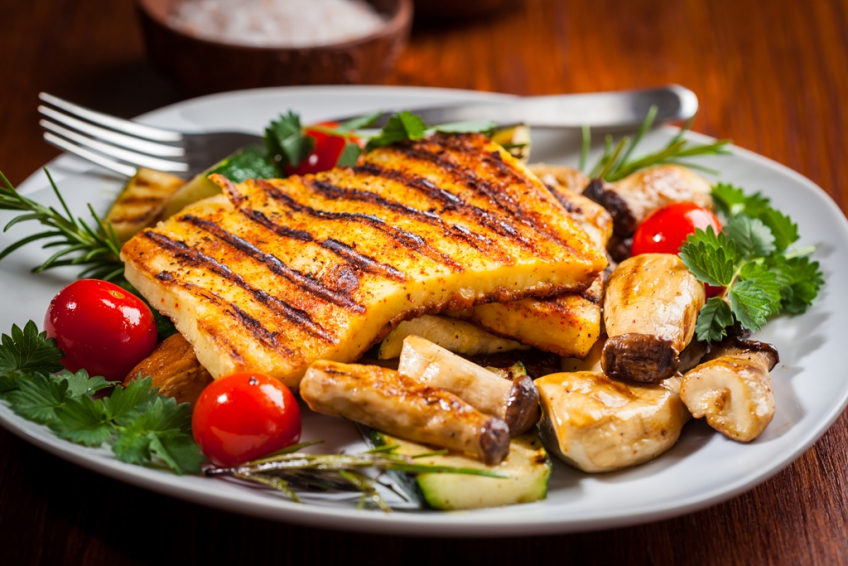
In 1999 the mark «Halloumi» was registered and it officially became a product of Cyprus.
Tzatziki is a traditional sauce made from yoghurt, fresh cucumber and garlic. You can grate the cucumber and add it to thick yoghurt from sheep’s or goat’s milk along with garlic, salt, spices, olive oil, and, optionally, lemon juice, mint and greens. Tzatziki sauce has a Turkish origin, but in Turkey this sauce is more watery. The sauce is served with bread, vegetables, meat or fried fish and it often can be seen on meze plates.

Tirokafteri is a spicy appetiser made from Feta cheese (sometimes mixed with other cheeses), chilli, yoghurt, lemon juice, garlic and spices. It is traditionally served with a warm pita, new potatoes or as a beer snack.
Dolmades is a very popular starter in Cyprus. It is grape leaves stuffed with rice and meat. The name of the dish can be translated from Turkish as «fill up». The origin of the recipe is not clear, but dolmades were widespread at the times of the Ottoman Empire. Do not forget to splash grape leaves with lemon juice before eating.
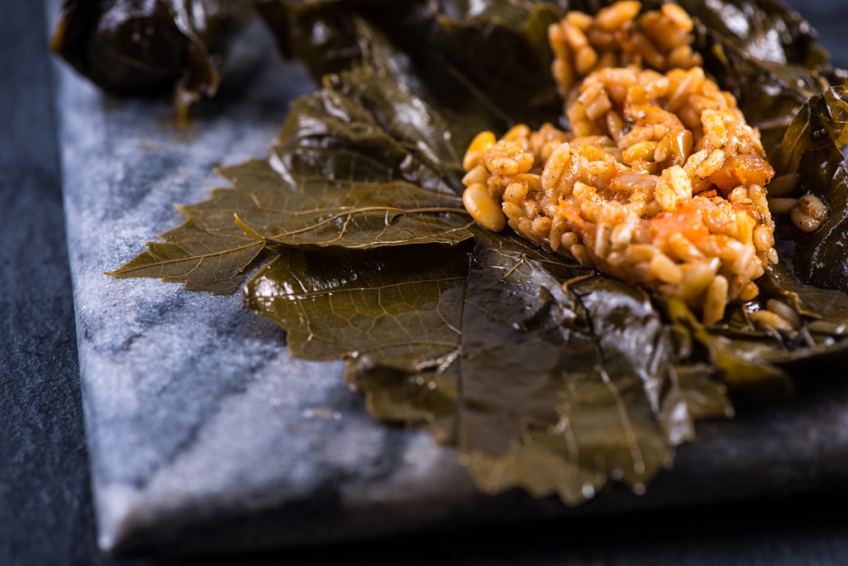
Taramosalata is made from the salted and smoked roe of the cod, mixed with bread soaked in milk, mashed potatoes and olive oil. The sauce is usually served with pita, sandwiches and olives. It is used during the Lent, unlike most fish and seafood dishes.
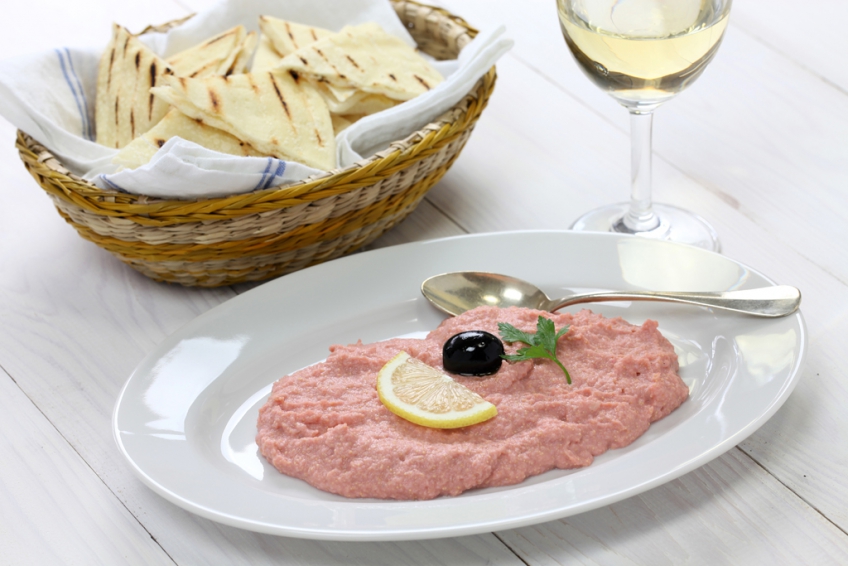
Tahini is a thick creamy sesame butter mixed with water, onions, garlic and other ingredients. It is sometimes served as an independent dish, but more often it forms a part of other sauces and dishes.
Baklava is a traditional Eastern pastry made from layers of thin unleavened dough with nuts and honey between them. It is extremely popular in Turkey, Cyprus, Bulgaria and Greece. It is believed that the first baklava was made for the Ottoman sultan in 1453.
